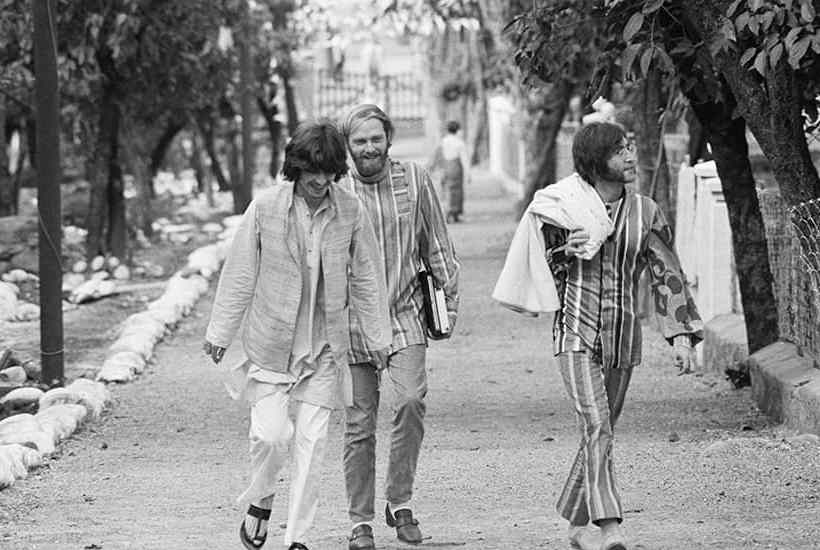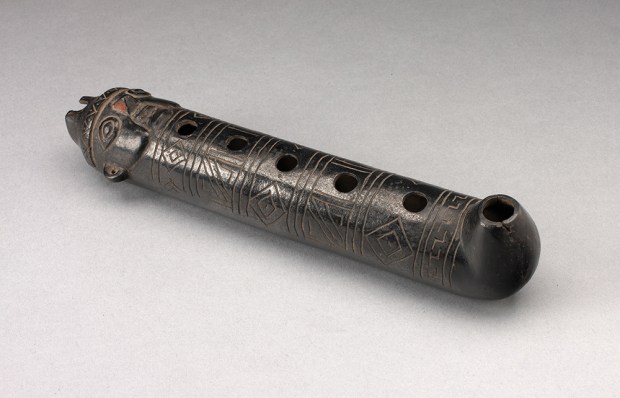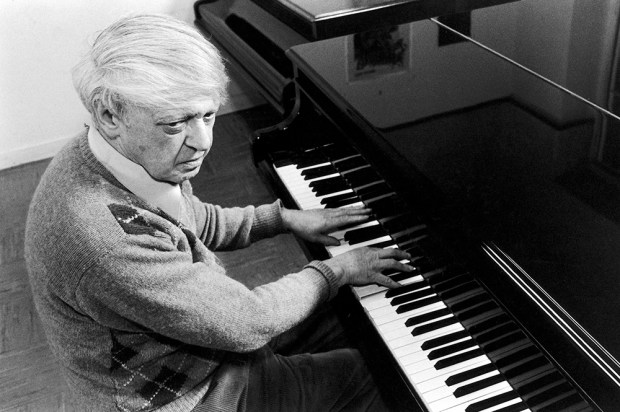On a Monday evening in May 1966, Paul McCartney and John Lennon visited a nightclub called Dolly’s in Jermyn Street. The two Beatles were accompanied by two Rolling Stones, Brian Jones and Keith Richards. Already at the club was Bob Dylan, stopping off in London on his European tour.
Dylan had first met Lennon and McCartney nearly two years earlier at the Delmonico Hotel in New York. All four Beatles, then in the first flush of American success, had gone to meet him after playing to thousands of screaming teenagers at a tennis stadium in Queen’s. Their fascination with his lyrical and emotional maturity was already showing in their songs. Although Dylan was less likely to admit it, the influence went both ways. Intrigued by the group’s musical sophistication (‘She Loves You’ uses nine chords, ‘Blowin’ in the Wind’ three), he was edging towards a poppier, band-based sound. That night, he introduced the Beatles to marijuana, which bent them further out of shape — or rather into a new one.
By 1966, the artists were pursuing ever more radical musical ideas. After Dolly’s, the assembled stars returned to Dylan’s suite at the Mayfair Hotel, where McCartney and Dylan each played pressings of songs from work-in-progress albums, which became Revolver and Blonde on Blonde respectively. The Beatles had expanded their repertoire of drugs, and McCartney played Dylan a song that was soaked in LSD: ‘Tomorrow Never Knows.’ It must have been impossible to hear this track for the first time and not be astonished by it. When the song ended, the Beatles awaited Dylan’s response. ‘Oh I get it,’ he said, ‘you don’t want to be cute anymore.’ It was both an exquisite putdown and transparently defensive.
Earlier that month a member of the Beach Boys, Bruce Johnston, had arrived in London with a pressing of their forthcoming album Pet Sounds. He hooked up with the Who’s drummer Keith Moon, who introduced him to Lennon and McCartney at another of their favoured clubs, the Scotch of St James. Having secured a record player at the Waldorf hotel, Johnston played them the album. Lennon and McCartney asked to hear it again and again. The sounds of Pet Sounds fed their way immediately into the Revolver sessions and are even more present on the Beatles’ subsequent album, Sergeant Pepper’s Lonely Hearts Club Band. The exchange was mutual. The Beach Boys’ creative mastermind, Brian Wilson, had been scared into making the creative leap of Pet Sounds by the Beatles’ album Rubber Soul.
Even if you know these stories, Luke Meddings’s highly enjoyable What They Heard will renew your amazement at the way these great artists inspired, competed and collided with each other in the mid-1960s, throwing off enough energy in the process to galvanise an entire generation. Alongside his three principals, Meddings discusses Motown, the Stones, the Byrds, Carole King, Jimi Hendrix and others, all of them weaving in and out of each other’s lanes in hectic crosstown traffic.
Pop in the mid-1960s was an artistic golden age, in the sense of a remarkable clustering of talents in dialogue, literally and figuratively. In previous golden ages, the artists lived and worked in proximity: sculptors and architects in Renaissance Florence, impressionists in Paris, composers and intellectuals in fin-de-siècle Vienna. The 1960s pop conversation was trans-atlantic, enabled by recording technology, radio, jet travel and the clubs and hotels of Mayfair and Manhattan.
Meddings is a marvellously assured guide to this world and its fluid interchanges. He has a deep love and knowledge of the music and includes fine-grained descriptions of key songs which send you back to them with fresh ears. He applies his erudition judiciously, citing Rossini to set the harmonies of the Beach Boys in context and explaining why English, with its beat-friendly stresses, suits pop, just as the smoother sound of Italian is a perfect fit for operatic melody. He is an elegant writer with a gift for metaphor: the chorus of ‘I Get Around’ circles upwards ‘like smoke from a contented burger stand’; the percussive touches in Pet Sounds evoke ‘swallows in a courtyard’. Speaking of his own love of the Beatles, he writes: ‘Their music entered me as straightforwardly as sunshine.’
The year 1966 was probably the era’s zenith. By the time of their Mayfair meeting, Dylan and the Beatles were beginning to turn away from each other. The Beatles explored the elaborately produced sound-world of Sergeant Pepper, which Dylan disdained. As Meddings puts it: ‘Dylan sat out psychedelia like a man waiting for the pub to re-open.’ The always variable output of the Beach Boys stuttered and declined, as Brian Wilson’s mental health deteriorated under the intense demands of creative competition. Dylan took time out, partly because of a motorcycle accident, but also partly to recharge. Only the Beatles maintained, and indeed sped up, their rate of production. Meddings reminds us that one of the remarkable things about them was that they never stopped, until they stopped.
Got something to add? Join the discussion and comment below.
Get 10 issues for just $10
Subscribe to The Spectator Australia today for the next 10 magazine issues, plus full online access, for just $10.
You might disagree with half of it, but you’ll enjoy reading all of it. Try your first month for free, then just $2 a week for the remainder of your first year.














Comments
Don't miss out
Join the conversation with other Spectator Australia readers. Subscribe to leave a comment.
SUBSCRIBEAlready a subscriber? Log in